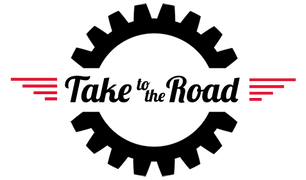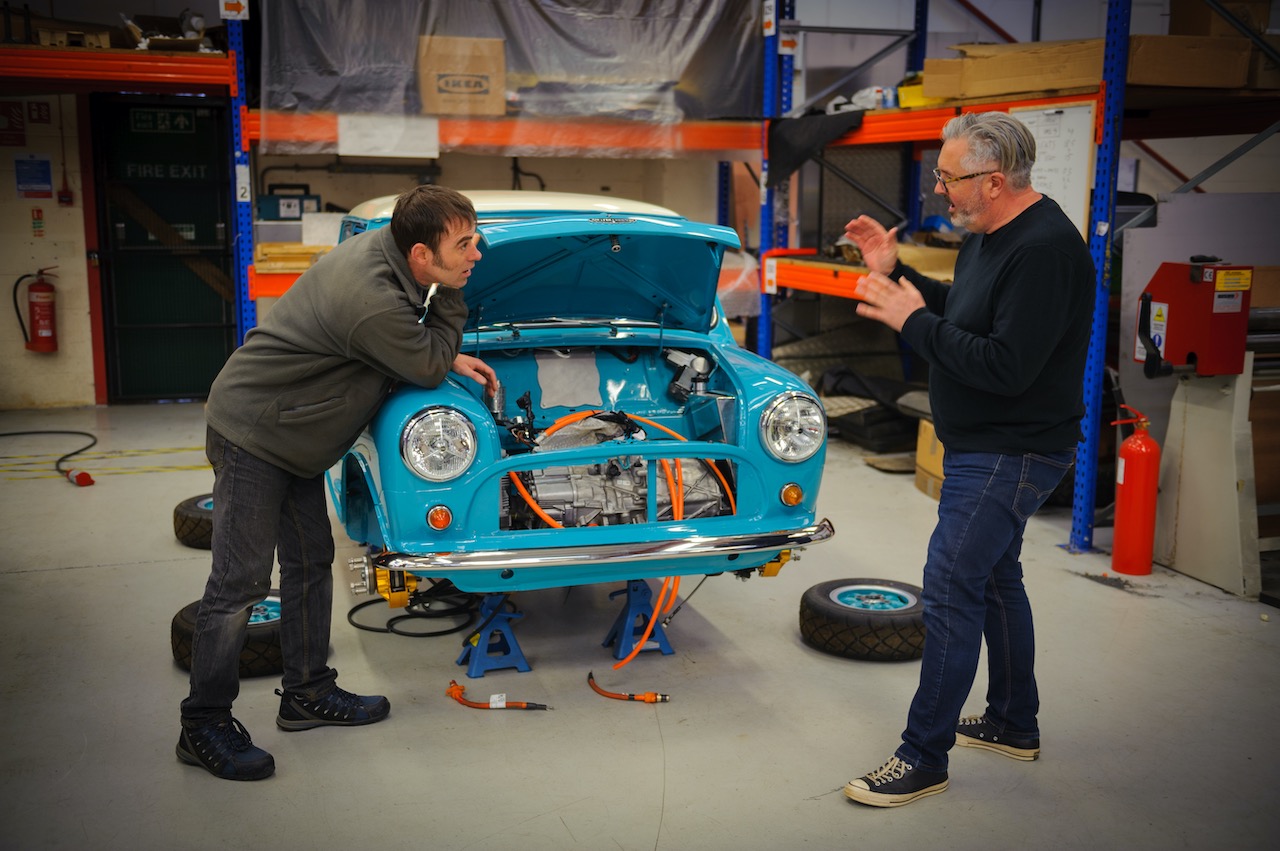Richard ‘Moggy’ Morgan and the team at Electric Classic Cars return in a brand new series of Vintage Voltage, which premiers this evening on Quest. In Series 2 Moggy lines up a fascinatingly diverse selection of classic cars, all destined to be converted into electric vehicles in his workshop in Wales. Fans of the show can look forward to seeing a Porsche 911, a DeLorean, a classic Mini, a Series 2 Land Rover and a VW Campervan get the Vintage Voltage treatment. Take to the Road sat down with Moggy to chat about Series 2 and the classics that have been given a new lease of life with the power of electricity.
Just the other day I was remembering back to when we first met in 2016 and you had just built your first electric classic car the 1965 VW Beetle called Bert. That was over 6 years ago now and at that time the EV market was all still quite new and the market plus the public were still a bit hesitant. However the tipping point has now arrived hasn’t it? Its full charge… pun intended!
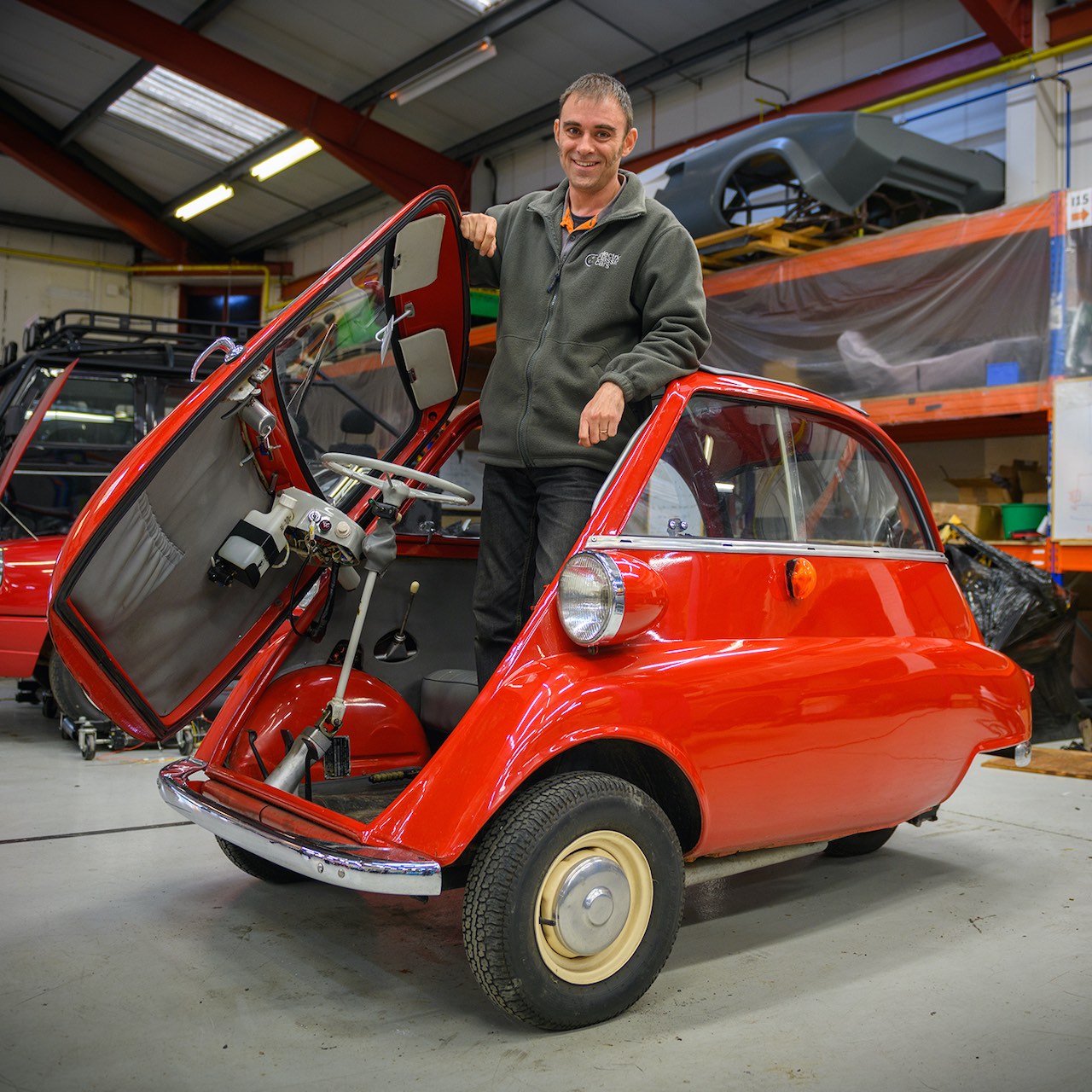
Richard – I know Niall you were right there at the start when I built Bert at my workshop at my house. That was 6 years ago! The classic EV conversion market was pretty much non-existent back then. There was myself and Michael over at EV West and that was it really and lots of DIY hobbyists around the world. How quickly it has all changed! The journey we started with Bert to where we are now, being the largest converter of classic cars in the world, shipping out kits to Australia, South Africa and America… to the workshop we have now… its been a hell of a journey. And I’ve enjoyed it. I’ve enjoyed it a lot! Those early market adopters have helped the masses move towards EV. Not everyone is comfortable taking risks with new technology. Over 5 years ago people weren’t taking electric cars seriously, until Tesla came along. They were on their own for a good while and then the big wig manufacturers realised you know what… that business model is working. Its taken a good number of years for the big guys to come round and change their factories over to electric. And now that they are marketing their own electric cars, the public feel more comfortable and word of mouth starts to come in, when friends and family start buying EVs and then they take the plunge. I think that’s whats taken the last 5 years for that transition to happen. So we have reached the tipping point and I actually think in the last year we’ve gone past that as more people are considering going electric for their next car.
The chance to re-imagine classics as electric vehicles, it really is a fantastic opportunity and probably the high water mark in terms of the evolution of the automobile from an engineering perspective. It redefines what a classic car is in so many ways.
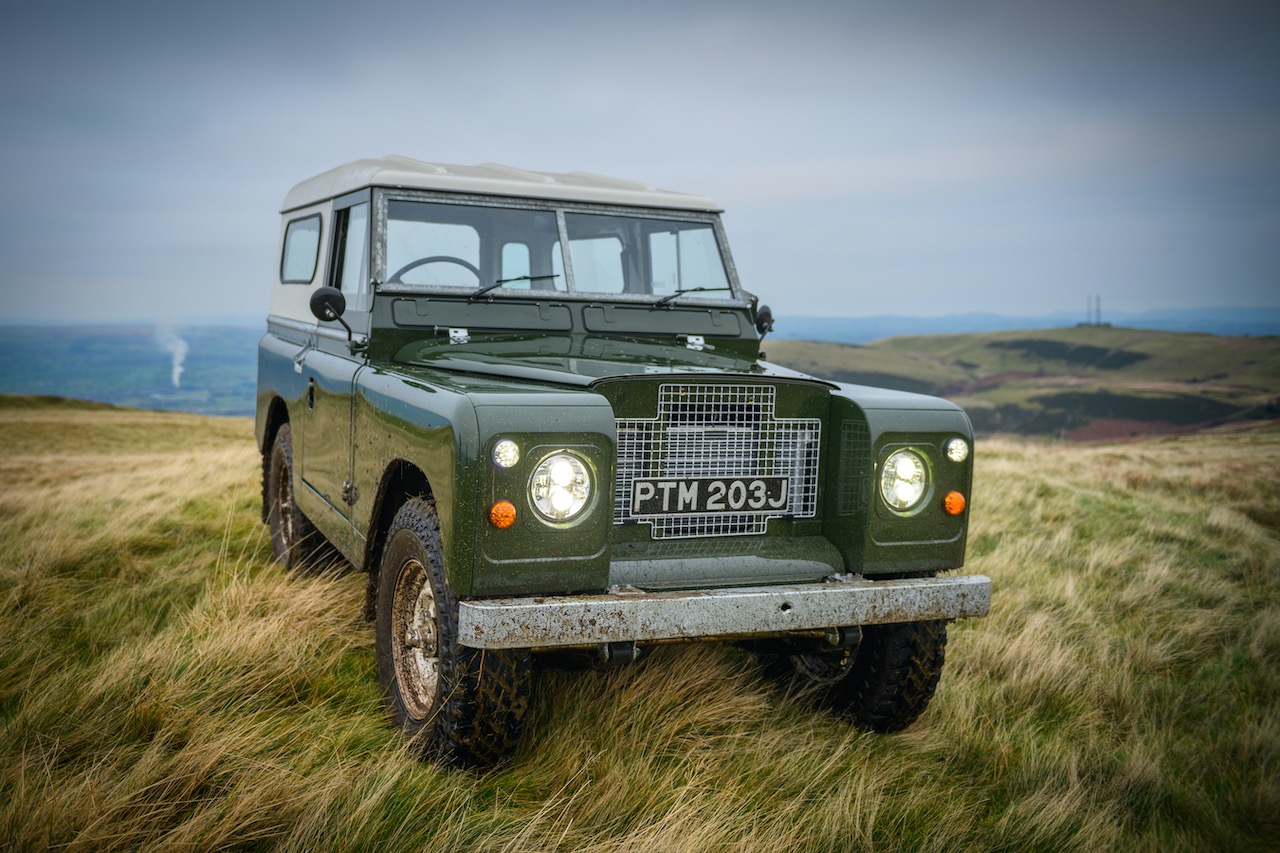
Richard – I think if you take a classic car and its styling and its personality, just sitting in one is a pleasant place to be. The retro look and feel of the interior for me is just a wonderful communication with the senses. But a lot of classics are let down if you want to use them regularly or as a daily driver like I do. So then you realise its not such a good idea when you factor in all the maintenance issues and things like it decides not to start one day, or whats that new noise or rattle. It all stresses you out. On the other side then why would you want to drive a modern car? They are all jelly moulds, there’s precious little aesthetic appeal with modern cars. So the nirvana for me is to essentially have a classic car with a 21st century electric drivetrain. Straight away you have reliability, there’s no maintenance… its just easier to live with. You don’t have to change down a gear all the time to overtake something on the road and you know what, with electric, you can actually overtake in a classic! So keeping up with modern traffic is easy as you’ve got lots of torque from the electric motor and a seamless driving experience. So for me its the perfect marriage of having beautiful iconic classics with wonderful styling and a nice driving experience along with taking all the negatives out.
Which takes us on to the Porsche 911 in Series 2. The 2.7 RS is an icon in its own right and is one of the greatest models ever made by Porsche. To take the original recipe and make it better must be a challenge and a big responsibility as well, given your Porsche rallying connection. And it looked like you didn’t want to hand the car over at the end!
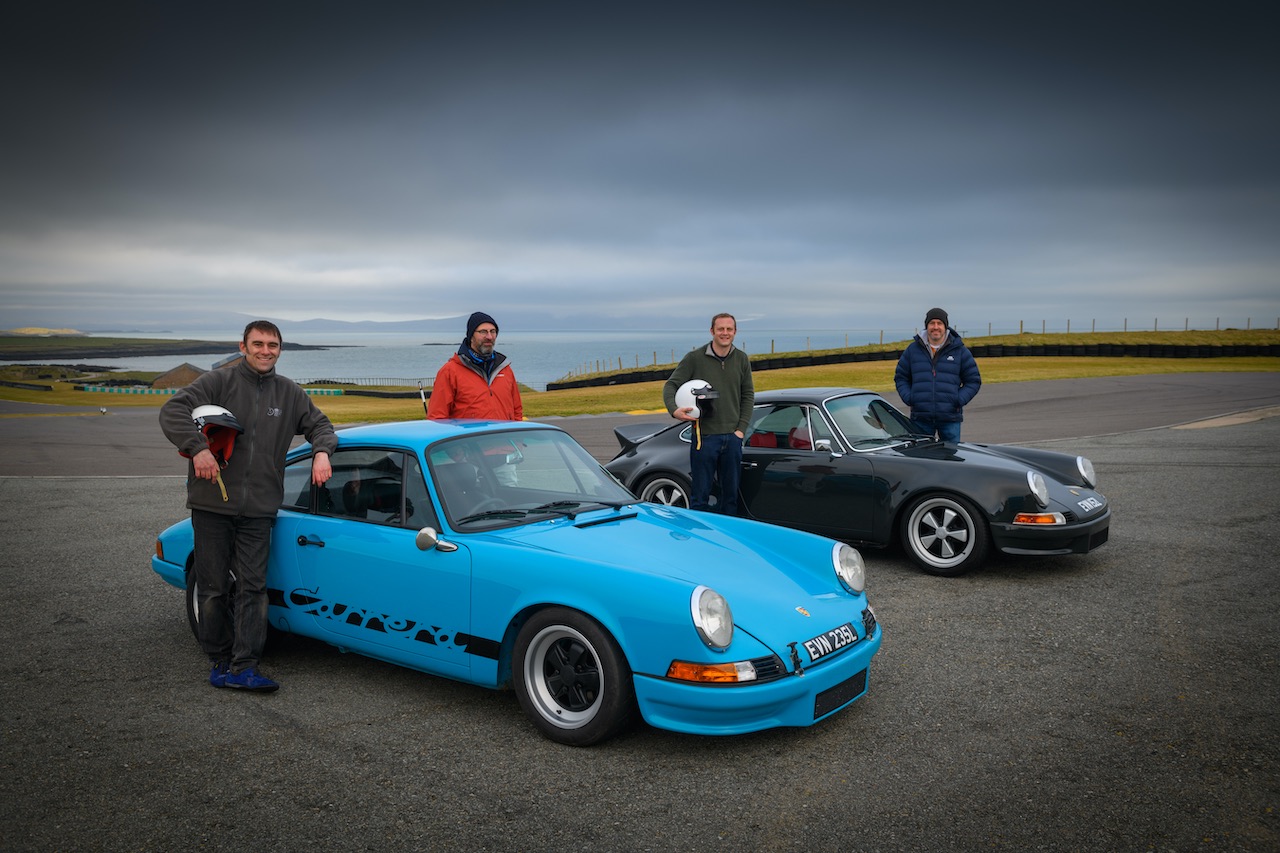
Richard – For me the 1973 Porsche 911 RS was the first supercar. I disagree that the Lamborghini Miura or others were the first supercar. Sure they look pretty but if you’ve ever driven one, they are horrible. They are not good handling cars! A supercar for me has to look awesome and drive awesome. And if you went on a track in 1973 in a 911 RS, that 2.7 litre engine singing behind you, that was a potent weapon! So that for me was the first supercar. The car we converted was an RS recreation, so its not a real one as they are worth a lot of money. But we still had to do that iconic car justice when we built it. So for me when the client came to us and said they wanted to go wild with the build I said straight away “thank God for that!” Ha ha! So for us to essentially improve on that car, which for me as an ex-petrolhead was perfection beforehand, it was a hard task. But there were elements that allowed us to bring it up to a modern specification. So the handling could be improved. Being a 911 it was always a little tail happy so moving the battery pack up front made the handling a bit more neutral, a bit like a Boxster or a Cayman basically. We put a Tesla motor in the back with loads of power and torque so that blew away not only the 1973 petrol 911 RS, but probably a modern GT3 RS as well. It was a big weight on my shoulders to get that car right and you’ll see in the episode when I came back after driving it around the track, I had aching cheeks I was grinning so much. It was an iconic day for me… I loved it! And yes I didn’t want to hand it over to the client and we stayed at the track for as long as possible… I had so much fun Niall!
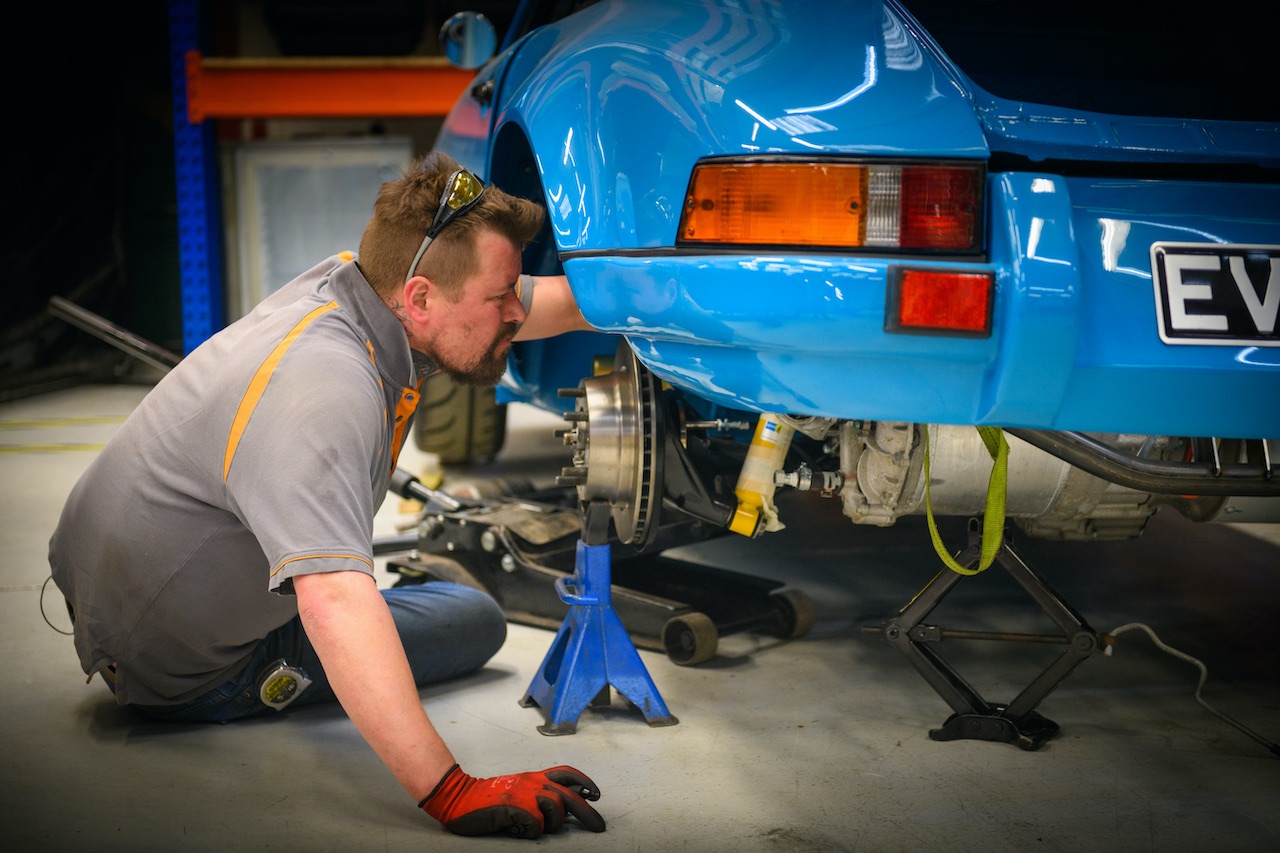

Converting a DeLorean must have been cool. To finally give that sportscar the performance it deserved when new must be a great sense of achievement.
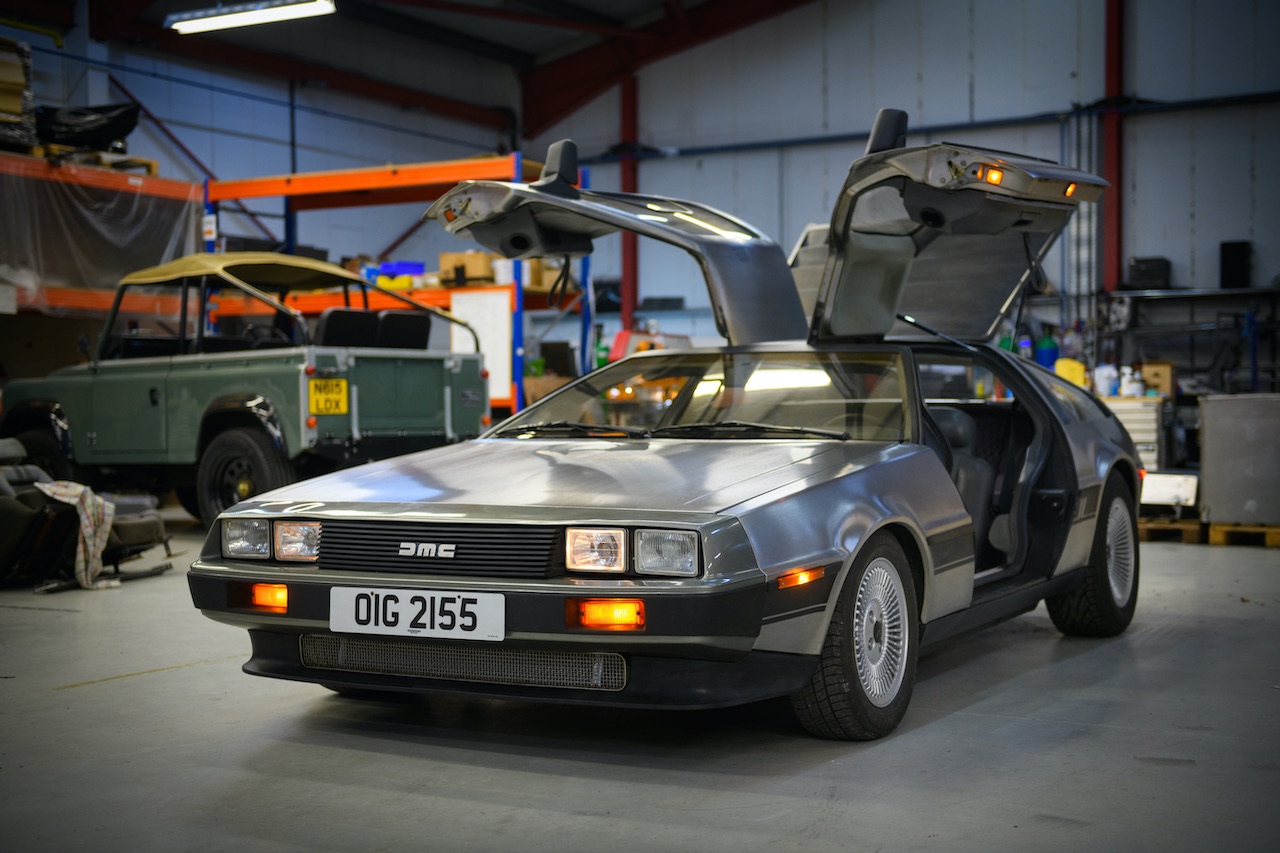
Richard – That car was so iconic, a real poster car of its era. On paper when it came out it was fantastic. You’ve got a stainless steel body so its not going to rust, you’ve got a Lotus designed chassis, you’ve got gullwing doors! That car should have been awesome. But it was let down by a high price, slightly poor build quality and a drivetrain that was just not good… to put it politely. It wasn’t great! So for us to convert a DeLorean and to have the opportunity to make it into the car that John DeLorean himself wanted to build, to be able to put in an electric drivetrain that matches the futurist styling of the car was just fantastic! The fact we could address those negatives was great and I really enjoy taking on cars where we can address problems like that and fix their achilles heals. Its actually hard to find the words to describe how awesome they are after the conversion. The DoLorean was just something else… you just have to drive it to experience how good it is!
When it comes to packaging an EV drivetrain in the VW Camper and the classic Mini, both vehicles couldn’t be further apart size wise. One has bags of room and the other with not much to play with all. How did you manage those builds?

Richard – Yeah the Mini was another build where the client said go wild. Which was great. But then we got it in the workshop and we were like…. “darn there’s no space!” They really are tiny! I grew up with one as a kid and when you are young, everything looks bigger. I remember my Dad dropping the engine and gearbox and working on them. So I was certain there was enough space for what we wanted to do. But when the car arrived it was a head scratcher as we weren’t sure where to put the motor and the battery pack. With that Mini, I’m really proud of the guys in the workshop because they packaged such an awesome solution and kit to fit in it. We used spaces that you wouldn’t even think were possible, like there’s a little battery pack that we put under the backseat. And we managed to squeeze a Tesla motor in the front and a battery pack on top of that again! Plus we didn’t impact on the luggage space in the boot either. There is a battery pack back there but as you know on a Cooper S, it has left and right side fuel tanks. After our build there’s more boot space in that Mini than there was when it left the factory! So to get all that in the car and for it to have decent range still was fantastic!

But it was the same with the Splitty too. You might say “oooh we have all this room” because its a big vehicle. But you kinda have and you haven’t. Because if you are going to use it as a practical campervan, you don’t really want to take up the practical space on the inside. So you have to really carefully think where you are going to put the battery pack and how its going to be mounted as well. Some might suggest you just put it underneath the van as there’s lots of space, but when you start looking at doing that, there isn’t actually much space there. Plus you don’t want a battery pack hanging below the chassis as it can get damaged. So with that VW campervan it had to have 200 mile range so we had to plan it carefully. And when you see it in the episode, when you look inside the camper, you can’t see where the battery pack is. Its stealthily hidden away and like with the Mini, we ended up with the same amount of luggage space at the end as we did at the start of the build. I won’t spoil the episode but we came up with a cool solution for that one.
Since we first met back in 2016, EV technology has leaped forward, with improvements to battery and motors etc. Where do you see the EV field going in the next 5 years? And in relation to classic conversions.
Richard – Good question… I’m not great with crystal balls but if you look at whats been happening in the last few years, you can predict fairly well where the industry is going to go. So from a general electric vehicle point of view, the transition to mass market will continue over the next few years. And I think EV adoption will happen quicker than people think, because word of mouth will have a lot of influence and I think it will be a more positive effect than marketing or government incentives etc. So I think the government is underestimating how quick the public will transition to electric vehicles. The challenge then is the charging infrastructure, which has increased a lot and has vastly improved in the past few years. More charger locations will come especially at big motorway stations and at supermarkets as well and parking lots etc. But from my industry point of view there will be more companies offering a similar model like we do. But I also think we will also see actual classic car restoration companies, you know the ones that have been doing e-Type Jaguars restorations for donkeys years etc, you’ll see those types of companies partnering with us and buying kits to do their own conversions, without having to do all the R&D themselves. And we are now doing some makes and models in batches of two and three at a time so that’s where the market is at right now. We’ll still get the rarer cars come through like the Ferrari Testarossa and the Gordon Keeble… that one is actually is in Series 2 so that will be a great one to watch.
Richard Moggy Morgan was talking to Niall Julian
The new season of VINTAGE VOLTAGE premieres 9pm, Thursday 27th January on Quest and is available to stream on discovery+.
